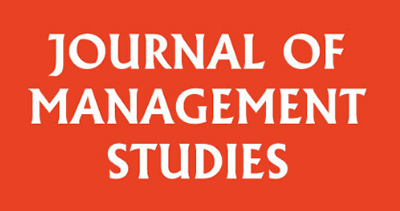
In 2018, before the advent of Covid-19, James Bond (aka Daniel Craig), was photographed on a New York street holding his baby daughter close to his body in a baby carrier or ‘papoose’. Although ‘Agent Bond’ was plainly off duty, sleep deprived and sporting beard, hoodie and spectacles, he nevertheless came under fire from talk show host Piers Morgan, who tweeted the photograph to his 6.5 million followers, accompanied by the caption: ‘Oh 007 – not you as well? – #emasculatedBond’.
Morgan’s derogatory comments on Twitter regarding Craig and the papoose incited a furore. Some new fathers responded by tweeting photographs of themselves carrying their own babies in papooses.
Morgan’s rejoinder was acerbic, suggesting that the photograph of Craig’s carrying of his baby daughter had damaged the image of James Bond. Morgan claimed that re-casting was required to seek a new: “007, who looks sharp in a tux and wouldn’t be seen dead in a papoose” (Washington Post, 2018). In Morgan’s view, Craig’s public presentation of himself as closely and physically engaged in caring for his baby daughter provided sufficient argument to preclude him from performing the role of 007, an employed secret agent associated with masculinity, heroism and long hours working.
As we now know, engaged fathering did not impede Craig’s employment trajectory, the latest 007 movie having just premiered post-Covid, Craig duly performing the role of Agent Bond. However, this example and wider debates around fatherhood, employment and the appropriateness (or otherwise) of involved fatherhood among employed men raise questions about the entitlement of Dads, who are in paid work, to be closely engaged with their babies and infant children.
Fatherhood and paid work
In our recently published Review of Fatherhood and Employment in the Journal of Management Studies we explore in detail such debates. We synthesise the growing body of interdisciplinary research on fatherhood and employment, bringing these conversations more closely into the arena of management studies with the aim of prompting future management research on the topic. We argue that present management and organization studies on fatherhood and employment tend to reflect static notions about the ‘nuclear family’, by implication comprised of a heterosexual couple and their children, with men positioned as lead earner. Our review identifies how employer expectations that Dads would usually prioritise work over family do not reflect the practices, or desires, of contemporary fathers. While employers might like the idea of fatherhood (which bosses associate with settled status, the need to provide for families and often a wage bonus) they may be less keen on the idea of engaged fathering, which might distract fathers from giving precedence to paid work.
Our interdisciplinary review of research on fathers and employment suggests we might look at men with children and work through four distinct but related lenses: work, family and fatherhood (which identifies employed fathers’ restricted opportunities to be engaged Dads); masculine hegemony and fatherhood (in which wefocus on how ‘masculine’ fatherhood is interpreted by employers and society more broadly through the lens of ‘manly’ hegemony); involved fathering (highlighting disparities between paternal desires to be involved with their children and what occurs in practice); and diversity and fatherhood (where employed fathers are viewed as multi-dimensional with a focus on personal and contextual characteristics). This fourth lens of diversity and fatherhood observes how research on employed men with children has explored fatherhood often from a traditional perspective, presuming men to be work-oriented and main breadwinners, living within dual-earner, heterosexual couple households. It allows for a more diverse and inclusive interpretation of fatherhood that includes ‘personal’ or individualized dimensions of diversity (e.g., age, race and ethnicity, sexual orientation, disability) and ‘contextual’ dimensions of diversity that are linked to relationship or other environmental factors (e.g., marital status, social class, family structure, resident/non-resident parenting status). We observe how, so long as the intersection of fatherhood and employment remain underexplored in management studies, with diverse forms of fathering in the ‘shadows’ of organizational research, the potential to identify policy implications in support of employed fatherhood remains limited.
Fatherhood and Diversity
As a means of shifting from those traditional views of fatherhood, wherein fathers are positioned as breadwinners within heterosexual couples, to more fluid family forms that characterise more diverse ways of ‘doing fatherhood’, our review introduces David Morgan’s sociological notion of ‘family practices’, a concept which challenges functionalist definitions of ‘the family’ as a stable, heterosexual structure that preserves traditional gendered divisions of labour. The idea of ‘family practices’ supports a vision of more fluid family forms which characterise 21st century ways of ‘doing’ family. It offers alternative ways of exploring fatherhood in relation to paid work because it facilitates new agendas for thinking creatively about fatherhood and employment.
007 – A secret message?
At the premiere of his latest Bond movie, as Daniel Craig stepped onto the red carpet, flashbulbs (and eyes) popped at the sight of his impeccably fitted fuschia-pink velvet tuxedo. Piers Morgan tweeted that this attire was not in keeping with the image of a ‘steely-eyed’ Bond – yet other commentators saw Craig as making a statement, through his choice of clothing, regarding the need for a more fluid interpretation and masculinity. Craig himself has not shared personally with us his reasons for this sartorial choice. His youngest child is older now, and he was not sporting a papoose to complement the pink tux. However, in the light of our earlier observations regarding Craig’s approach to fatherhood we are tempted to speculate that he might be seeking to symbolise a much-needed change in how employed fathers are viewed – expressing, through his cerise velvet jacket, a sense that interpretations about masculinity and employment need to change – because even a masculine icon such as Bond might need, or desire, to engage with his own children.
NB Caroline Gatrell would like to express grateful thanks to the Leverhulme Trust for the generous award of a Leverhulme Fellowship (2018/19), which made this research possible.

0 Comments